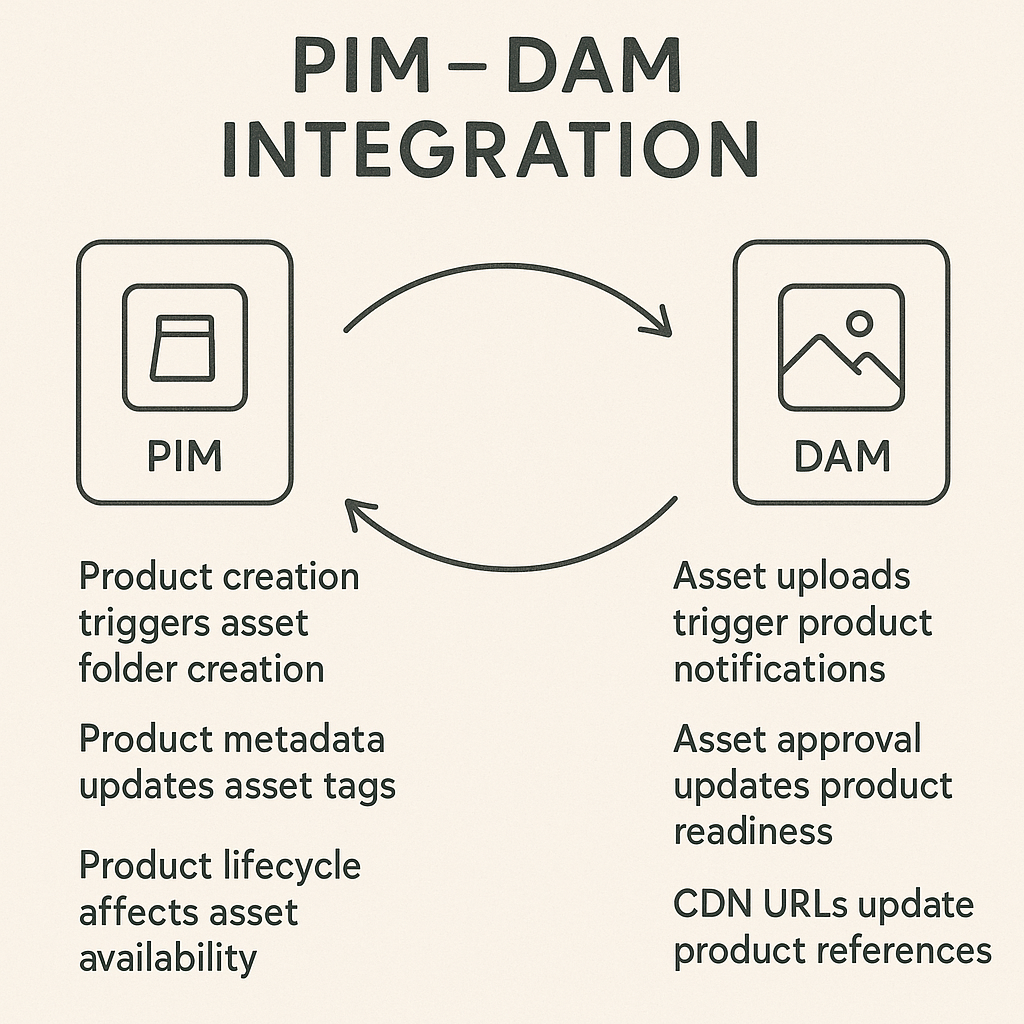Three Integration Approaches
PIM and DAM systems can be integrated using three main technical approaches:
- Vendor-Native Connectors: Pre-built integrations (e.g., Akeneo ↔ Bynder)
- Middleware Platforms: Azure Logic Apps, AWS Step Functions, iPaaS solutions
- Custom API Integration: Direct REST/GraphQL integration between systems
CDN Reference Strategy
Best practice: Store CDN URLs in PIM, not asset files. This approach:
- Eliminates file duplication
- Maintains single source of truth in DAM
- Enables dynamic transformations (resizing, format conversion)
- Reduces PIM storage requirements
Example URL: https://cdn.example.com/assets/{asset-id}?w=800&h=600&f=webp
Data Flow Patterns
PIM → DAM
- Product creation triggers asset folder creation
- Product metadata updates asset tags
- Product lifecycle affects asset availability
DAM → PIM
- Asset uploads trigger product notifications
- Asset approval updates product readiness
- CDN URLs update product references
Technical Considerations
Built-in vs. External DAM
Some PIMs include DAM functionality:
- Pimcore: Integrated PIM+DAM in one platform
- Inriver: Built-in asset management with CDN
- Akeneo: Basic asset storage, external DAM recommended for complex needs
API Requirements
- Webhook support for real-time updates
- Bulk operations for mass asset linking
- Metadata synchronization capabilities
- Error handling and retry mechanisms
"The integration of the systems involved in preparation of product launch will reflect in the effectiveness of the product launch. When PIM and DAM work seamlessly together, time-to-market accelerates dramatically."
SB
Sivert Kjøller Bertelsen
PIM & DAM Integration Specialist
